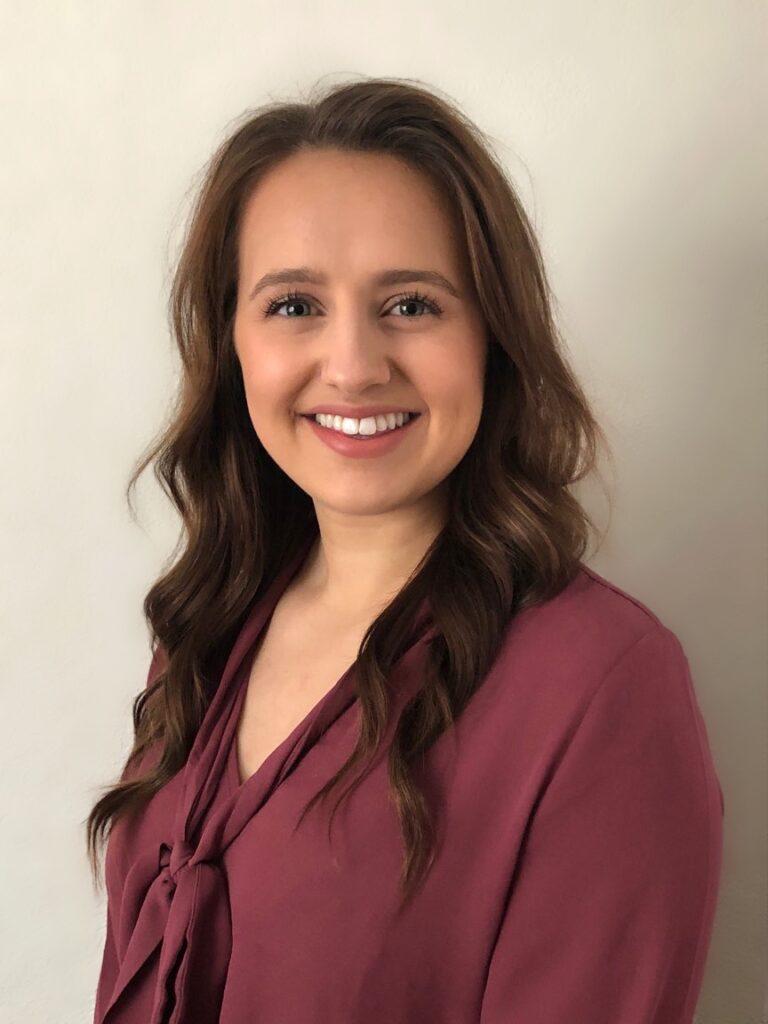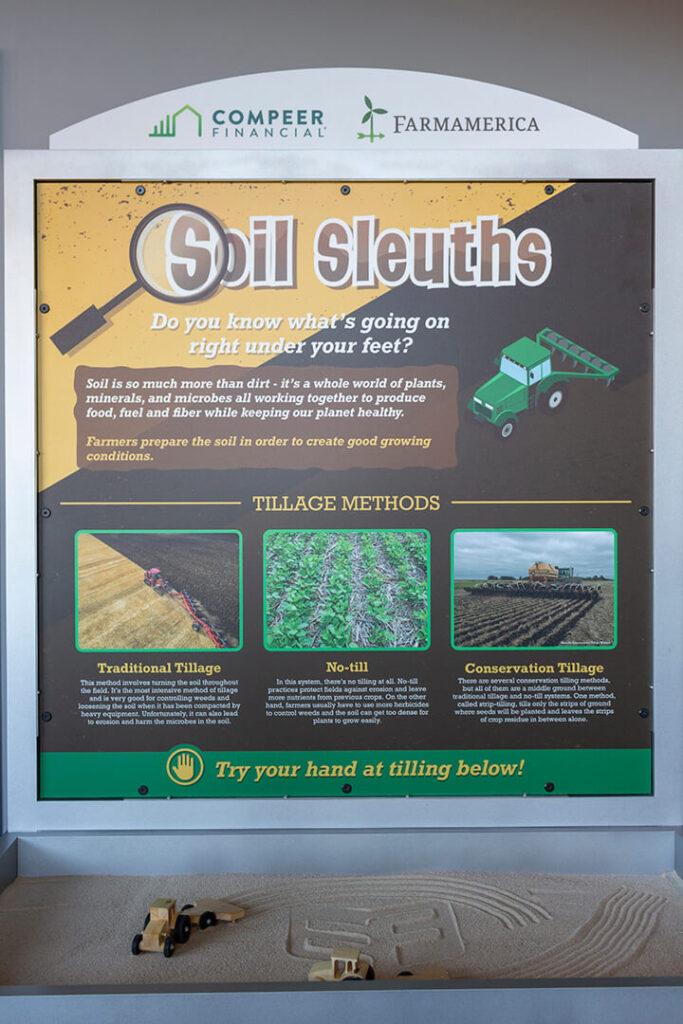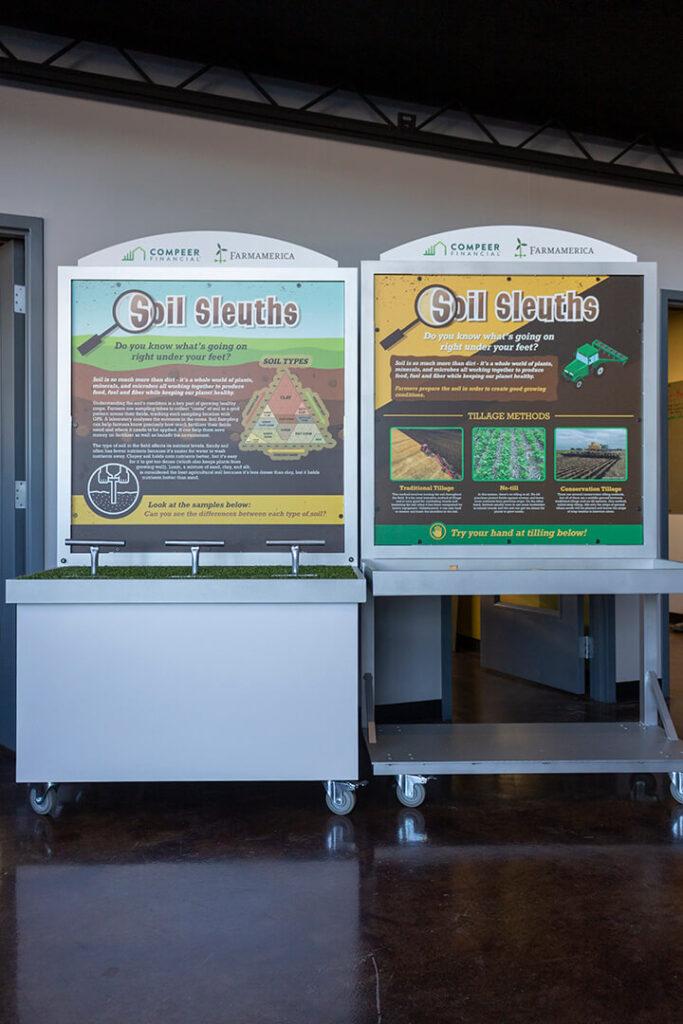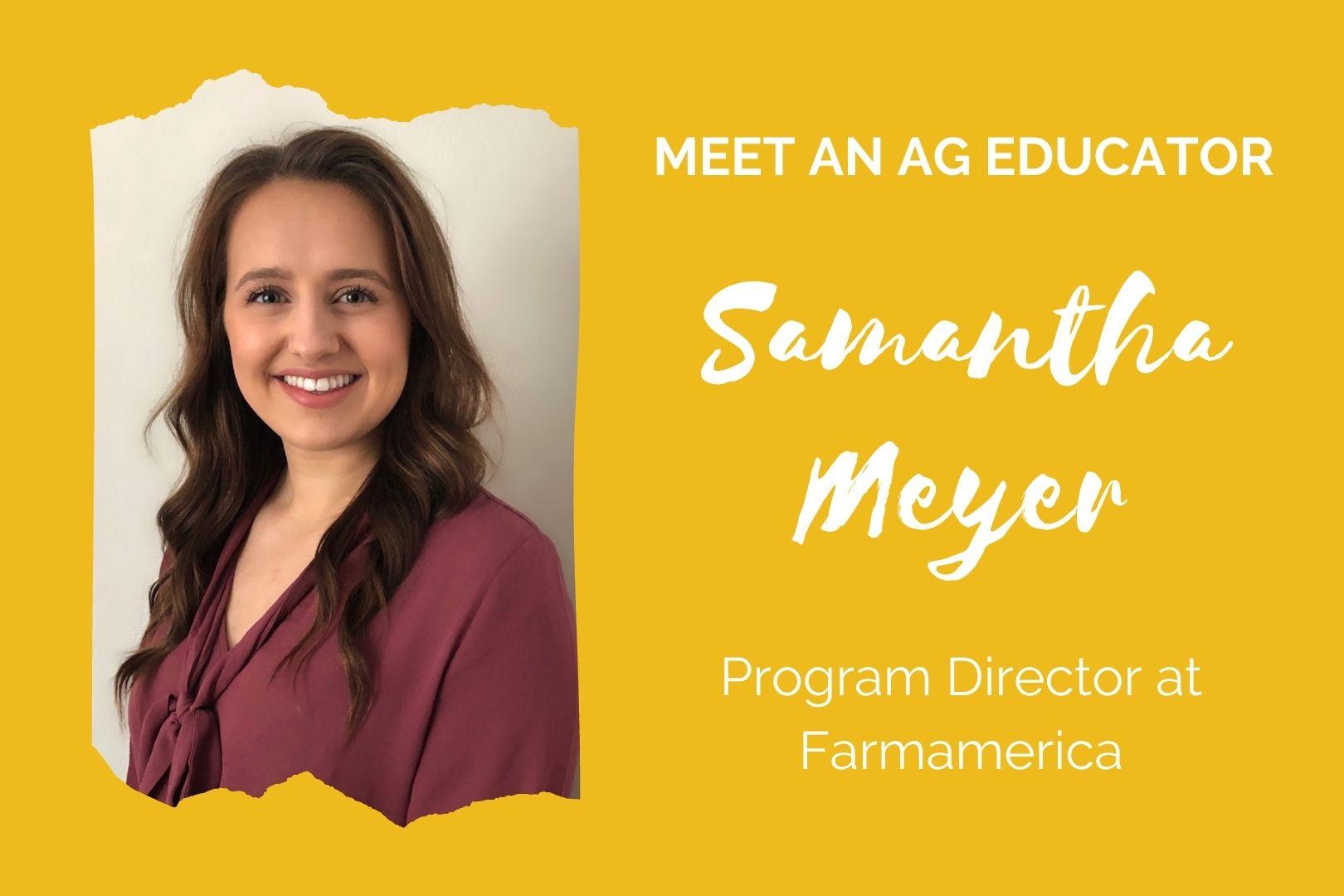
We spend a lot of our time working with the people who are trying to give consumers facts about agriculture. It’s great to collaborate with folks who share our passion for increasing agricultural literacy, to support their programs and bring their vision for a new educational display to life.
Farmamerica, an education center dedicated to ag, is one of our newest clients. We designed two brand-new displays about soil science for a program they run (which you’ll hear about below!). Today, our contact at Farmamerica, Samantha Meyer, joins us to explain how she discovered an interest in ag and came to love ag education.
Exhibit Farm: So how did you wind up at Farmamerica?
Samantha Meyer: Originally my background is elementary education. I decided after college that wasn’t the route I wanted, but I still loved children and educating. And Farmamerica is in the same community where I’d taken a summer job; I’d actually visited it for field trips in elementary school. I was just browsing jobs one day when “Program Director at Farmamerica” popped up.
I read the description, and even though I don’t have a huge background in agriculture I decided to go for it anyways, because of my education background and the opportunity for program planning and involvement with youth. I’ve worked here for about a year and a half now, pleasantly surprised to find an interest in agriculture I didn’t know I had.
EF: So what was it that got you interested in ag education, then?
SM: That’s a long answer. One of our programs is targeted towards middle school students, explaining that there are career opportunities in agriculture beyond what you might imagine. You can be involved in agriculture in so many ways — marketing, food science, teaching.
And so I self-reflected and realized if someone maybe had told me about all these different outlets, I might have gone a different route in college. When I was that age, agriculture just didn’t strike me as the fun job. But with this job, because I get to fulfill my passion for programs and planning and being involved with youth, all the different interesting things related to agriculture just kind of tagged along.

I learned in college how important it is to continue learning throughout life. None of us are done learning, and this position at Farmamerica lets me continue learning about subjects I didn’t think I’d want to know about. Constantly learning something new every day — from the science and precision behind caring for livestock to the finance side of ag — and being involved with youth has ignited my passion for agriculture even more. I hope I can continue to do this for a long, long time.
EF: Can you tell us more about what Farmamerica does?
SM: Our mission is to tell the story of Minnesota’s agricultural history, past to present to future — that’s our billboard statement.
Our bread and butter is our tours; we have 120 acres of outdoor interpretive space. That includes a prairie landscape where we talk about what Minnesota was like before settlement and farming. Then we move on to the 1850s site where we talk about what it was like to be a settler in Minnesota. And lastly we have the 1930s farmsite where we talk about how technology changed from animal- and human-power to machine-power, and the whole evolution of agriculture up to the 1930s. That area includes our dairy barn and it’s a working farm with livestock in the summer.
So that tells the past history of agriculture. We do school tours in the spring and fall, and in the summer we do guided or self-guided tours for the public, and then we also have special events. For example, one of our biggest events is Meat-a-palooza. It’s a tasting event where people can get samples while also learning from the producers. Restaurants will come and then we’ll pair them with a farmer to tell the full story from production to plate.
We do other events tailored for families or kids who might not have an immediate interest in food. It’s educating in a surprising way, offering a fun family event but also offering that agricultural education part too.
We’re also developing new programs to tell the story of today’s agriculture. We’re really excited to start moving beyond just the past, because we have the past down. The main goal of talking more about modern ag is to help the general public make that connection about why agriculture is so important and how it’s connected to our everyday lives.
EF: How did Farmamerica get the idea for the Soil Sleuths displays?

SM: We’d originally received a generous grant from Compeer Financial to bring an existing traveling exhibit to our site, but because of the pandemic that wasn’t possible anymore. We had to either find a new way to use the grant, or return it. So I said, “Well, why can’t we make our own traveling exhibit?”
I don’t even remember how I stumbled across Exhibit Farm, but I had this idea and then I found Exhibit Farm specializing in agricultural displays and exhibits and I was like, “How much luckier could I get to find a place that does exactly what I’m imagining?” And then looking through all of the creations for other organizations, I knew it was a perfect fit. It was absolutely a highlight of my winter months to work on this.
It’s been a very fun process to get all of our ideas together and see them come to life. It’d be a highlight of my day to recieve an update from you guys saying “Here are the latest drawings! What do you think?” So it was really a fun process for us and I hope we can do some more fun things together in the future.
EF: You guys first showed off the Soil Sleuths displays at an event last weekend, right?
SM: Yes, we were really excited. It was a hit! I’m confident as we have more visitors in the warmer months, everyone’s going to be excited to interact with them. Definitely a lot of excitement has come from unboxing the exhibits and the reveal.
EF: How do you guys plan to use the displays going forward?
SM: So the main purpose of the Soil Sleuths exhibits for us is to be a traveling exhibit. Right now we’re focused on getting people to the site, but we want to expand our reach through school visits. We want to bring fun things and hands-on experiences to the students.
We plan to bring these displays into classrooms and pair them with some of our agricultural educational curriculum. Students can really get their hands on things and see what it would be like to sample soil and see the difference between representations of tillage systems. Pairing verbal learning with hands-on opportunities or audible opportunities, it’s just another way to reach a different audience.
The displays will live in our visitor’s center unless they’re traveling at school events or even fairs, which we’re hoping to get into in the future so we can really broaden our reach. It would help folks identify Farmamerica and see why they should come visit our site.
But the displays will help with on-site events too. We have one program called Dirt Detectives where kids come basically to get muddy, and they learn about why soil’s important as a natural resource and why we should conserve it. They’ll leave knowing that dirt and soil are two different things, so they’re not really Dirt Detectives, they’re Soil Sleuths.
